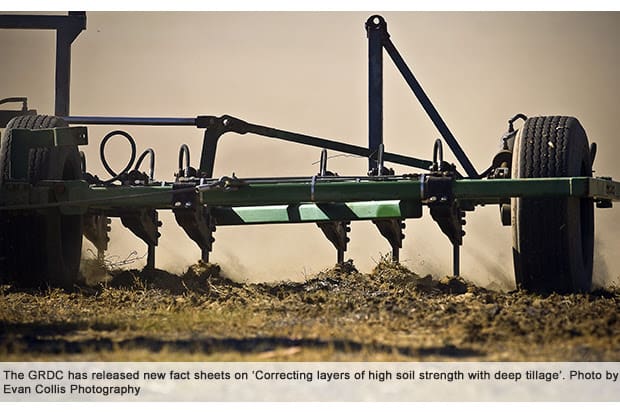
GRAIN growers weighing up the pros and cons of deep ripping as a tool to ameliorate soil constraints are encouraged to understand their soil types before taking a tyne to problem paddocks.
GRDC soils, nutrition, agronomy and farming systems manager – north, John Rochecouste, said strategic deep ripping was designed to ameliorate subsoil layers compacted by machinery traffic or natural cementation.
“Deep ripping can be an effective way to improve aeration in specific soil types, which in turn can benefit root growth and the uptake of subsoil water and nutrients,” Dr Rochecouste said.
However, he said it was critical growers investigated their soil profile and correctly identified the type, severity and depth of constraints affecting crop root growth before starting any deep ripping treatment.
“But – and this can’t be emphasised enough – growers need to understand their soil constraints, because deep ripping can actually be detrimental in soils with sodic or toxic layers,” Dr Rochecouste said.
“If growers have correctly identified their soil constraints, they can also make informed decisions about the costs versus the benefits of deep ripping.
“Deep ripping can be a costly exercise, so growers need to be aware that they won’t see yield or crop performance benefits from this treatment if they don’t address other constraints such as acidic and sodic soils.”
Deep ripping paddocks with a high stubble load is preferable. It is common for deep ripping to be deferred if there is inadequate stubble cover and the erosion risk is too high.
Vital information
The GRDC is currently working with a team of soil scientists across Australia to improve grower, agronomist and farm adviser knowledge and understanding of deep ripping in terms of the inherent risks, cost benefit outcomes and responsiveness to yield over time.
New fact sheets on ‘Correcting layers of high soil strength with deep tillage’ have been produced by the GRDC for different Australian cropping regions to assist growers to determine whether their soil types would benefit from deep ripping.
“If you are a grower thinking about deep ripping as a treatment in paddocks, it would be worthwhile reading the relevant regional fact sheet to determine the pros and cons for your particular scenario,” Dr Rochecouste said.
“These fact sheets include the very latest research outcomes and also provide comprehensive links to additional information on rolling, delving, inclusion plates and machinery requirements.”
Source: GRDC
More deep ripping information for Western Australian growers can be found here, more information for Queensland and New South Wales growers is available here; and for information about the treatment in South Australia, Victoria and Tasmania click here.

HAVE YOUR SAY